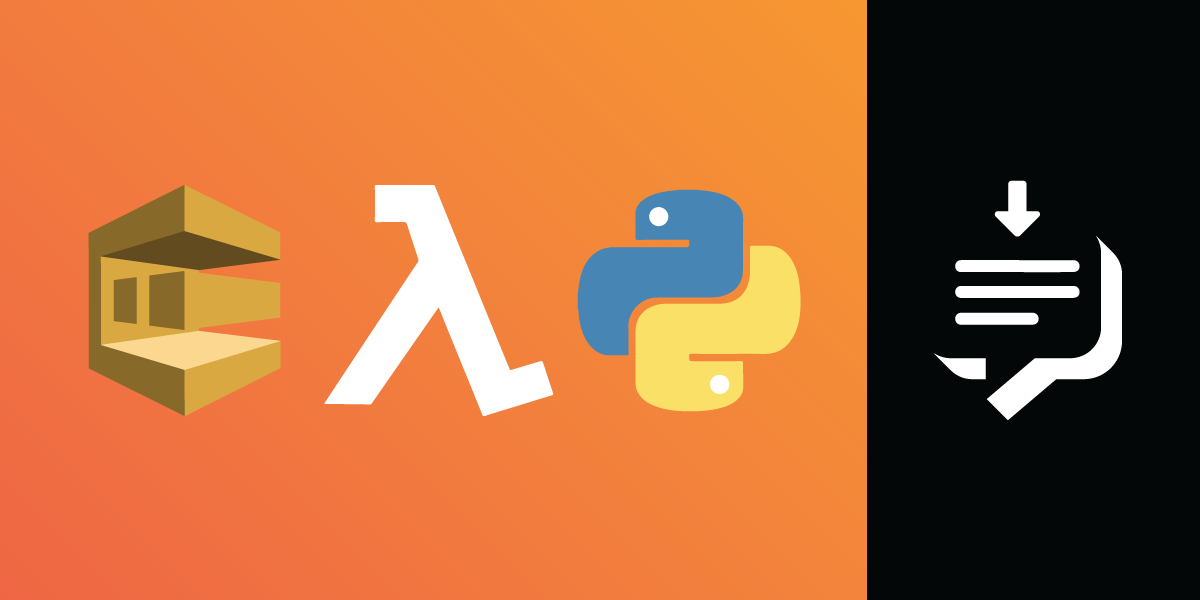
Using Amazon SQS for Queuing Messages Using AWS Lambda and Python
When expecting to receive large bulks of messages, ensuring they are all received can be problematic. One way to navigate these pitfalls is by using a message queue, such as AWS SQS.
In this example, you'll create a serverless microservice on AWS Lambda using this Python application available on Github that uses Flask, and Serverless. The application serves two purposes: It adds messages to AWS SQS and then facilitates the actual sending through Vonage SMS as requested.
Prerequisites
- Python 3.8 (update
serverless.ymlif higher version is desired) - Pip
- Node.js and npm
- AWS CLI
- Serverless Framework
Vonage API Account
To complete this tutorial, you will need a Vonage API account. If you don’t have one already, you can sign up today and start building with free credit. Once you have an account, you can find your API Key and API Secret at the top of the Vonage API Dashboard.
Setup Instructions
Clone the nexmo-community/sms-aws-sqs-python-receiver repo from GitHub, and navigate into the newly created directory to proceed.
Environment
Rename .env.default to .env and add values to VONAGE_API_KEY and VONAGE_API_SECRET provided by your Vonage API Dashboard.
AWS Setup
You will need to create AWS credentials as indicated by Serverless. Update the .env file with these.
Also, create a new SQS FIFO queue using the default settings, and update .env with the SQS queue URL. By using FIFO, it ensures messages are sent in the order they were stored.
Usage
To start, create a virtualenv from within the project root to contain the project as you proceed. Then activate it as follows:
virtualenv venv --python=python3
source venv/bin/activate
Next, initialize npm and follow the prompts selecting the defaults. Unless you desire to change any of them. Also, use npm to install needed dependencies for dev to enable Serverless and Lambda to work with the Flask app.
npm init
npm install --save-dev serverless-wsgi serverless-python-requirements
Now you can use pip to install the required Python dependencies. The dependencies are already listed in the requirements.txt, so instruct pip to use it.
pip install -r requirements.txt
Running Locally
Should you wish to run the app locally and test things out, before deploying to AWS Lambda, you can serve it with the following command:
sls wsgi serve
By default this will serve the app at http://localhost:5000. Hitting Ctrl+c will close it down.
Deploy to Lambda
With all the above finished successfully, you can now use Serverless to deploy the app to AWS Lambda.
sls deploy
IMPORTANT: This application does not contain any authentication for use. Therefore, ensure you add authentication in front of it to prevent public usage. By leaving it open to the public, it could result in usage charges at AWS and Vonage.
Available Endpoints
There are 4 URL endpoints available with this client:
1 HTTP GET request to /
- Doesn't perform any actions, but provides a quick way to test
2 HTTP POST request to /add
- This action stores the message in SQS.
- Pass a POST with a JSON body like the following. Substitute the placeholders, indicated with
<>with your data. - The result contains the SQS
MessageId.
{
"from": "<your_name_or_number>",
"message": "<sms_message_contents>",
"to": "<recipients_number>"
}
3 HTTP GET request to /get
- Retrieves the message from SQS FIFO queue.
- Once received, the
ReceiptHandlecan be used to remove it from queue.
location=None, media_mode=relayed, archive_mode=manual
4 HTTP POST request to /delete
- This action deletes the message from SQS.
- Pass a POST with a JSON body like the following. Substitute the placeholders, indicated with
<>with your data.
{
"receipt_handle": "<your_receipt_handle>",
}
Examples:
Go to the URL provided by the deploy process. Below are some examples of what sample requests may look like: (Your URL will vary.)
GET https://7ulasfasdasdfw4.execute-api.us-east-1.amazonaws.com/dev/
The / endpoint returns the generic message.
POST https://7ulasfasdasdfw4.execute-api.us-east-1.amazonaws.com/dev/add
The add endpoint will return the SQS MessageId.
GET https://7ulasfasdasdfw4.execute-api.us-east-1.amazonaws.com/dev/get
The get endpoint will return a message for use.
GET https://7ulasfasdasdfw4.execute-api.us-east-1.amazonaws.com/dev/delete
The delete endpoing will delete a message from SQS.
Deactivating Virtualenv
To exit the virtualenv you can deactivate it, when desired.
deactivate
NOTE: Depending on OS, you may need to prepend
virtualenvto the command above.
Next Steps
If you have any questions or run into troubles, you can reach out to @VonageDev on Twitter or inquire in the Vonage Community Slack team. Good luck.
